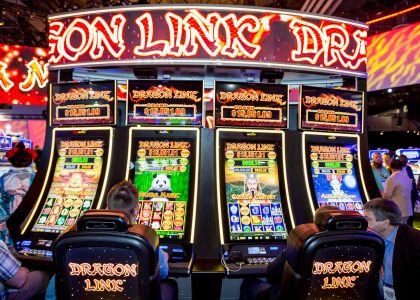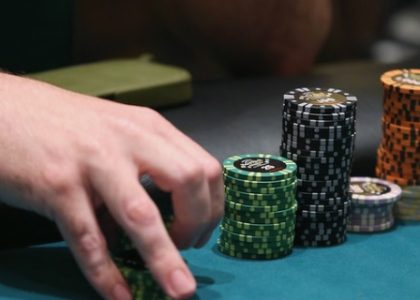What makes any casino game interesting is the sudden change in the game. A basic blackjack game involves What makes any casino game interesting is the sudden change in the game. A basic blackjack game involves players deciding whether to hit or stand on the cards they are dealt. To be sure, beating the dealer is fun, but the game is so much more than that. Some players feel that all the challenge lies in counting the cards. Given that casinos like to frustrate card counters by changing or shuffling cards, card counting is probably the most challenging strategy. Whether you count or not, you should know to split the moment the dealer hits you with a pair of aces or eights.
But what if you get 10 points?
You have two 5s in your hand, and the traditional blackjack strategy says “never split a 5”. Some adventurous players do it anyway. 10 is a strong hand, and the next card dealt to you may be an ace or a 10. You have to be crazy to split 5s. If I’m adventurous, I’d rather double down on a pair of fives. So, what is the best split or double when playing voslot blackjack for real money? Are there times when there is less risk of going against conventional wisdom? Find below.
When to split 5s – if any
I’ll start with the crazy situation. I can’t think of a good reason to split the 5s, but a friend once made me imagine a scenario that’s at least not as stupid as it sounds. Assuming you’re counting cards, and the casino’s attitude toward shuffling is laissez-faire, if you’re really confident that you have a lot of low-value cards left, you can split 5s. There seem to be a lot of possible combinations to play with here. Splitting 5s really means you’re playing two 5s. Imagine what you would do if your hand started with 2 and 3. You have no choice but to hit. If the next card is an ace, you will be sitting on a 6 or 16. You must hit and hope for an ace or 2-5. A friend of mine called this “crawling out of the hole”. You are trying to get into winning territory. When I start with such a weak hand, it feels like I have to play three or four times to solve the hand. I can’t think of a reason to split 5s unless you just want to risk betting and chewing. But if you force me to do it at least once, I’ll only do it if I believe there are plenty of low value cards out there. Who doesn’t want to beat the odds, right?
When to Double Up on 5s
Assuming your sanity won’t get you into the game, is it a good idea to double down on a pair of 5s? Our card counting friends might say that it’s worth the risk if you’re adventurous and sure your next card will be a 7 or better. Standing on a soft 17 is better than guessing if you have more low hands. But don’t make this decision in a vacuum. When you have a pair of 5s, traditional strategy says that if the dealer’s up card is anything between 2 and 9, you should double down.
Basic strategy for doubling down
Most basic strategy guidelines for doubling down cannot be kept simple. Doubling works differently for everyone. You should think carefully when policies are based on assumed table rules. If the strategy guide says, “This works when you have six decks” or “When the dealer has to stand on a soft 17,” it means that the strategy may not work for you in other situations.
The “basic” part of basic strategy starts with knowing what rules you’re playing. If you’re playing the coveted single-deck game, put that eight-deck strategy card aside, and vice versa.
Casinos may limit doublings to high value hands of 9 or higher. For simplicity, if you play by these rules, just double up on the ace+7 hand. More experienced players may be challenged to calculate odds for other combinations. If the casino allows you to double up on any hand, your safest strategy is to double up on a hard 11 against any of the dealer’s cards, and double on a hard 10 if the dealer shows 2 to 9. There are other doubling guidelines, but they assume certain rules are in play. Give yourself time to learn the game.
When is the best time to double up with an ace?
Everyone should know split A’s in blackjack. But if you have an ace, when should you double down? When you double down, you only get one more card. When this strategy pays off, all you need is one card.
There are two points to consider:
- What is the value of your second card?
- What is the highest face value of the dealer’s card?
If your ace has an 8 or higher, don’t double down. period. You are sitting 19 or older. If you have an ace and you’re sitting on 18, you might get away with doubling down if the dealer’s up card is a 3, 4, 5, or 6. The lower your second card, the more likely you are to escape a double. But the dealer’s hole card should influence your decision. If the dealer shows a 2 or anything better than a 6, don’t double down.
Should you always split 8s?
The basic blackjack strategy says 8s is a safe and sensible split.
It’s hard to go wrong with a split 8s. The math shows that this works well in the long run. So, you have a pair of 8s, you split, and the dealer gives you a 5.
You kick yourself off an easy 21. If you’re counting cards and you think there’s still a lot of low value cards in your deck, splitting 8s might not be the smartest move. All you need is a 2 to 5 card. That’s a small range, but if you’re sure you’ve played more high-value hands, you have a better chance of surviving. An easier way to call is to look at the dealer’s cards. Some people won’t split an 8 if the dealer shows a 9 or 10. The easiest strategy is to always split your 8s. As you gain more experience, you can cut some losses by not splitting 8 wisely.
In conclusion
The basic strategy should simplify your decision as much as possible. Some basic strategy guidelines are not enough to simplify things. As you gain experience and understand what your hands can do, go back and study the exceptions in the basic strategy guide. Wait until you’re really ready to play a more challenging game.










